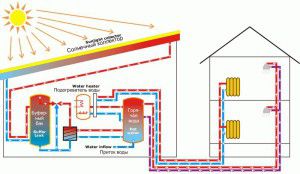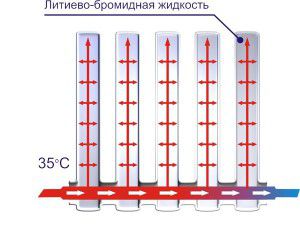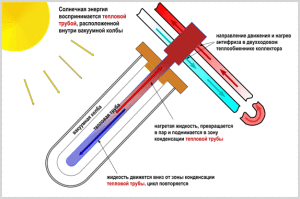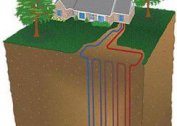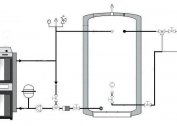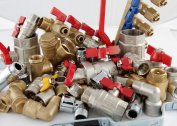Attempts to improve the traditional heating system sometimes lead to the emergence of quite effective methods. One of them is the use of the property of certain liquid substances to pass from a liquid to a gaseous state at relatively low temperatures. Taking into account this fact, a vacuum heating system was developed: batteries, radiators, pumps, tanks can function both individually and in combination.
Ways to increase heating efficiency
What is the purpose of such heating devices? Firstly, they are necessary to increase the efficiency and safety of the entire system. However, each vacuum heating system or its individual parts differ structurally and the principle of operation.
Currently, there are several types of devices based on the use of low-temperature boiling liquids or pressure difference.
- Vacuum heating batteries for autonomous systems. They are heating elements, certain areas in which are filled with lithium bromide liquid. Low pressure in them reduces the boiling point to +35 degrees. As a result of this, a large amount of energy is released, which leads to rapid heating of the room;
- Solar systems. With their help, the useful energy of the sun is transferred to the coolant. For this, vacuum solar collectors are installed for heating the house. Their principle of operation is largely similar to vacuum heating batteries - a special liquid with a low boiling point is also used;
- Alternative vacuum expander for heating. With it, you can upgrade the open air heating system, ensuring minimal evaporation of water;
- High Efficiency Vacuum Pumps. They can be used to improve coolant circulation in pipes with large volume systems. Also, they became very popular for arranging autonomous water supply and sewer systems.
Each of these devices, with the right selection of technical parameters, can improve the operational characteristics of heating. But for this it is necessary to consider their operating principle and design features.
A powerful vacuum pump for heating can also be used for water supply. To do this, you need to make a switching mechanism for the connecting pipes.
Vacuum heating radiators: principle of operation and selection tips
Low-temperature modes of heating gave impetus to the development of new types of batteries. One of them is vacuum heating radiators for a private house. They are similar in appearance to classic aluminum or bimetal models. The difference lies in the distance between the sections (it is much larger) and the internal device.
As mentioned above, the principle of operation of vacuum heating radiators is to use lithium bromide liquid. Consider the specific design of these devices. They consist of the following elements.
- Housing. It has a division into two sections. In the lower part, a horizontal channel is installed for the passage of the coolant, which acts as a heat exchanger between heated water and a liquid located in vertical sections;
- Horizontal channel with coolant. Depending on the model, it can be connected to an autonomous water heating system or have heating elements. When using the latter, electric vacuum heating radiators are obtained. They heat energy from the heating element is transferred to water (or oil filler), resulting in an increase in the temperature of lithium bromide liquid;
- Vertical sections with secondary coolant. The level of air heating in the room depends on their quantity and volume. It is important that a minimum pressure is created inside these cavities. The lower it is, the faster the fluid will heat up.
Why there is no widespread transition to vacuum heating radiators. Reviews on these devices are mostly positive. However, the choice should take into account the features of their operation. To ensure the water temperature in the pipes about 40-60 degrees is problematic for autonomous systems. Although this is the basic principle of operation of vacuum heating radiators. This can lead to quick cooling of the coolant in remote sections of the highway. Therefore, it is recommended to install pyrolysis boilers for vacuum heating systems, the normal temperature of which is 60/45 or 70/50 degrees.
Another way to increase efficiency is to install a single mixing unit in front of several vacuum heating radiators for a private house. As a result, hot water will be mixed with chilled water from the return pipe to the desired temperature level.
The undoubted advantage of electric vacuum heating radiators is the ability to control the heating level separately for each device. However, this increases the cost of paying for electricity. Such models are recommended to be installed in small rooms with a good level of thermal insulation. You should also take into account their high cost - a four-section model with a capacity of 800 watts has a price of 8 thousand rubles.
You should purchase electric vacuum radiators for heating only factory production. Otherwise, there is a high probability of depressurization of the vacuum chamber, which will lead to breakdown of the entire device.
Solar heating systems
The use of solar energy is one of the promising areas in the development of heating systems. In addition to the well-known solar panels, collectors that use the thermal energy of the sun are widely used. Structurally, they are a network of pipelines forming a single field. Inside them is a coolant with a low boiling point. As in vacuum radiators, it is enclosed in tubes with low pressure. This design is located on the sunny side of the plot or the roof of the house. As the heating medium begins to circulate and enters the heat exchange tank of the vacuum solar collectors for heating the house. There, his energy is transferred to water, which can be used both for heating and for hot water supply.
The main element of a vacuum solar collector for heating a house is a frame with vacuum tubes. Depending on its area, the total power of the entire system changes. Features of the operation of collectors of this kind are as follows.
- Possibility of use as an auxiliary source of thermal energy. Unlike the principle of operation of vacuum heating radiators, the operation of which is not affected by weather factors, solar collectors need constant exposure to UV light. Therefore, in winter it is not practical to use such a system;
- Energy saving. In summer, solar collectors successfully cope with the task of hot water supply and heating of small rooms in early autumn.In this case, energy costs are minimal and may be associated with the operation of the pump to ensure fluid circulation;
- Relatively high cost. The average price of a vacuum manifold with a frame is 45 thousand rubles. If it is planned to purchase a full-fledged water supply system for 300 liters, then it will cost from 150 thousand rubles. Autonomous vacuum solar collectors designed for heating a home and domestic hot water will cost at least 310 thousand rubles.
But, despite the high cost, such systems are becoming increasingly popular. The emergence of new, cheaper and more efficient manufacturing materials provides a prerequisite for lower prices.
It is impossible to use an expansion vacuum tank for heating in such systems, since the liquid must be under low pressure.
Vacuum expansion tank for heating
In most cases, the expansion vacuum tank is manufactured independently. It is an upgrade of a similar model for an open heating system. But unlike it, installation does not occur at the top of the highway, but at the bottom.
To do this, the vacuum tank for heating is connected to the pipeline using pipe 1/2. For operation, the vacuum tank designed for heating needs to be filled with 1/3 of the coolant. In the process of heating the water in the pipes, it expands, as a result of which the excess enters the tank. If the amount of coolant in the pipes decreases, under the action of the created low pressure, the opposite effect occurs - water from the vacuum tank for heating moves into the pipeline.
The use of such a design has several advantages.
- Optimization of the installation space for all heating elements. The expansion tank can be placed directly next to the boiler or in another room of the house;
- Reducing the evaporation of the coolant, which is the main problem of all open systems;
- Using an expansion vacuum tank for heating, you can visually control not only the liquid level in the pipes, but also its composition. This contributes to the timely cleaning of the line from accumulated debris and alkaline deposits.
The disadvantages of the expansion vacuum tank for heating include the lack of factory models. It can only be made independently. To do this, use steel tanks of round or cylindrical shape with a calculated volume. It should be at least 10% of the amount of coolant.
Summary
In what cases is it recommended to install a vacuum system for heating a house? With the exception of positive reviews about vacuum heating radiators, the installation of a solar system or expansion tank of the described type are auxiliary mechanisms for improving or optimizing the operation of the heating system.
A powerful vacuum pump for heating will improve the circulation of water, but will directly affect the thermal regime. The coolant simply does not have enough time to cool down, which is unacceptable for a water heated floor - mixing the flows will not lower the temperature to the desired level.
When choosing and installing the remaining elements of vacuum heating, their features should be considered.
Vacuum radiators
In addition to thermal power, the rules for installing vacuum heating radiators in a private house are observed.
The minimum distance from the heating surface to the windowsill should be 8 cm. Moreover, the level from the floor to the bottom of the battery can also not be less than 4 cm. To improve heat transfer, it is recommended to install heat-reflecting materials on the wall behind the radiator.
Solar collectors
In some models, plain water can be used instead of special fluid. However, the efficiency of such installations is an order of magnitude lower than that of the above.This point must be checked with the seller.
Also, for efficient operation, the surface of the vacuum tubes is coated with a special material that improves the absorption properties of light energy.
Vacuum expansion tanks
Before self-production of structures, you need to choose the right material. It is best to use stainless or galvanized steel. But it should be borne in mind that for its welding it is necessary to use a special apparatus operating in a certain mode. The best way out of this situation is to purchase a suitable factory-made capacity and slightly upgrade it by installing the necessary nozzles for connecting to the heating pipeline.
A vacuum heating system, including batteries, radiators, pumps and reservoirs can effectively complement the work of the main. Therefore, first you need to calculate the necessary indicator of additional power, and then select the appropriate components and elements.
The video shows the principle of operation of vacuum heating radiators:
